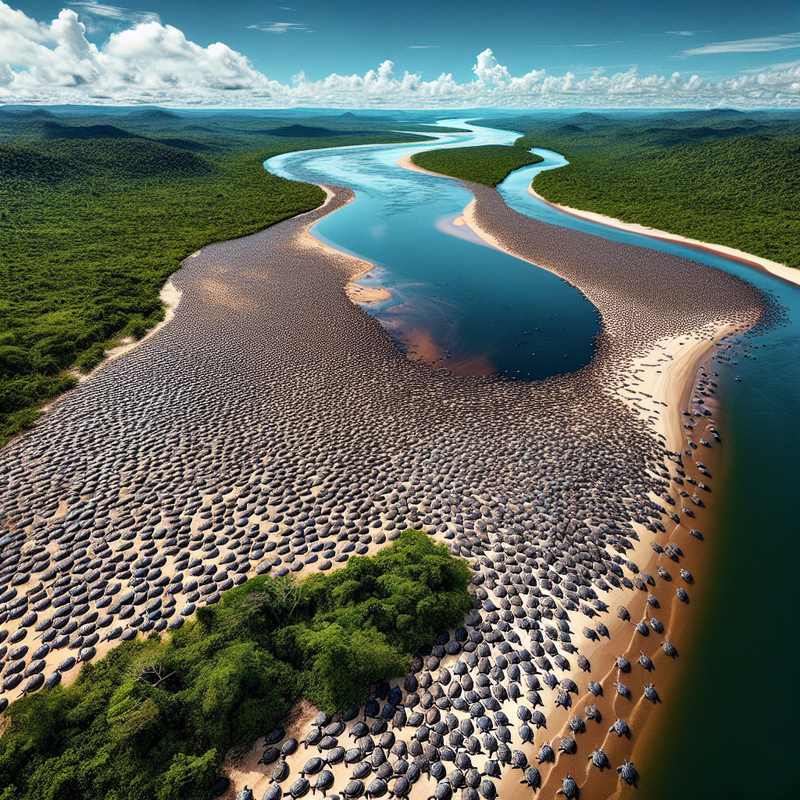In an unprecedented discovery, researchers have found the largest giant South American river turtle nesting area in the world
Also known as the Arrau turtle, this significant discovery was made within the expanses of the Amazon Basin. Utilizing advanced drone technology, scientists successfully documented in excess of 41,000 turtles along the banks of the Guaporé River, which delineates the border of Brazil and Bolivia.
The collaborative research conducted by the University of Florida (UF) and the Wildlife Conservation Society (WCS) has been published in the Journal of Applied Ecology
This study demonstrates how drone surveys paired with intricate statistical analysis can greatly improve the monitoring of wildlife populations. Lead author Ismael Brack stated, “We introduce an innovative method to monitor animal populations more effectively.”
Giant South American river turtles rank amongst the heftiest of freshwater turtles
With mature adults reaching lengths of 90cm and weights up to 80kg. In the height of nesting season, during July and August, the female turtles gather on the sandy banks to deposit their eggs. Nonetheless, the turtles face ongoing threats from illegal poaching and the destruction of their natural habitats, despite existing legal protection measures.
To surmount the challenges associated with precisely counting this turtle population, researchers employed a rigorous method at one location along the Guaporé River
They marked 1,187 turtles with non-harmful white paint and tracked their movement across a span of 12 days. During this time, they utilized drones to capture 1,500 images per sortie. These images were ultimately synthesized into high-resolution orthomosaics for detailed analysis by the team.
While traditional counting methods put the turtle numbers at around 16,000, preliminary evaluations of drone footage estimated the figure to be close to 79,000
However, the advanced method that factored in movement data along with probabilistic models yielded a more dependable estimate of 41,000 turtles. Brack highlighted the critical nature of precision in data collection for conservation purposes, stating, “Without an exact count of a species’ individuals, how can we determine if its numbers are dwindling or if conservation efforts are proving effective?“
The team is committed to advancing their survey methodologies even further
With plans to extend their drone flights to additional nesting sites throughout the Amazon basin in countries like Colombia, and potentially extending to Peru and Venezuela. Brack explained, “By aggregating data from numerous surveys, we can identify population trends and inform the Wildlife Conservation Society on where to focus conservation efforts.”
The stunning imagery contributed by Omar Torrico of the Wildlife Conservation Society reinforced the magnitude of the turtle nesting area
Providing compelling visual evidence for the study’s findings. The innovative approach of these researchers is set to not only foster better conservation strategies for these turtles but also to refine the monitoring processes for other wildlife species.
















